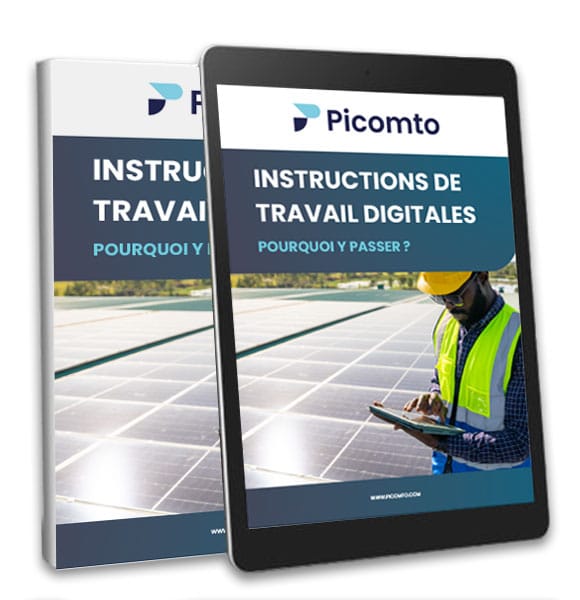Is your agri-food enterprise facing the formidable challenge of an external audit? External audits represent a critical stake for any organization in the food sector. Indeed, these controls determine not only your regulatory compliance, but also your credibility in the marketplace. A poorly prepared audit can result in financial penalties, loss of certification, or even temporary production shutdown. Conversely, meticulous preparation guarantees evaluation success and strengthens stakeholder confidence. This article provides you with a detailed checklist and concrete solutions to optimize your audit preparation. Through innovative digital tools and proven methodology, you will transform this constraint into a genuine opportunity for continuous improvement.

Key Points to Remember Regarding External Audits in Agri-Food:
- Methodical preparation: A structured checklist reduces non-compliance risks by 80%
- Essential digitalization: Digital tools improve traceability and responsiveness
- Team training: Trained personnel constitute your best asset when facing auditors
- Centralized documentation: A unified system facilitates access to critical information
- Corrective actions: Rigorous monitoring of preventive measures optimizes results
Ready to revolutionize your audit approach?
Contact our experts today to discover how to digitalize your preparation.
1. Why Having a Checklist is Essential for Preparing an External Audit?
Preparing for an external audit requires a systematic and rigorous approach. In the agri-food industry, regulatory requirements constantly evolve, making preparation even more complex. A well-designed checklist then becomes your roadmap to success.
Indeed, it structures your approach, minimizes oversights and guarantees exhaustive coverage of control points. Moreover, it facilitates coordination between different departments within your enterprise.
1.1. What are the Main Challenges of Audits in Agri-Food?
The agri-food industry presents specificities that complicate external audits:
- Multiplicity of standards: IFS, BRC, ISO 22000, HACCP
- Complete traceability: From raw materials to finished product
- Allergen management: Strict control of cross-contaminations
- Temperature and hygiene: Compliance with cold chain and sanitary protocols
- Extensive documentation: Procedures, records and proof of compliance
These challenges require impeccable organization. Consequently, numerous enterprises fail due to inadequate preparation.
Discover how other agri-food enterprises have overcome these challenges with our detailed case studies!
1.2. How Does a Digital Checklist Improve Preparation?
Digitalization radically transforms audit preparation. Unlike traditional methods, digital tools offer:
- Data centralization: Immediate access to all documentation
- Real-time updates: Instantaneous and synchronized modifications
- Automatic notifications: Alerts for deadlines and required actions
- Complete history: Traceability of all changes made
- Mobile accessibility: Consultation from any device
This approach eliminates human error risks. Thus, your teams gain efficiency and responsiveness.
1.3. What Benefits for Your Enterprise?
Adopting a digital checklist generates tangible advantages:
- Reduction of non-conformities
- Time savings: 3 times faster preparation
- Continuous improvement: Trend analysis and optimization
- Auditor satisfaction: Professional and structured presentation
- Stress reduction: Serene and confident teams
These benefits translate directly into improved competitiveness. Furthermore, they strengthen your brand image with clients and partners.
2. What Key Elements to Include in Your Audit Checklist?
An effective checklist must cover all aspects evaluated during an external audit. Experience shows that certain elements are recurrent and critical. Nevertheless, each enterprise must adapt its checklist according to its specific context.
The main objective consists of anticipating auditor expectations while optimizing your internal processes. This proactive approach positions you favorably from the audit’s beginning.
2.1. How to Organize Necessary Documentation?
Document organization constitutes the pillar of your preparation. Structure your documents according to this hierarchy:
- Level 1: Quality policy and management commitment
- Level 2: General procedures and quality manuals
- Level 3: Detailed work instructions by position
- Level 4: Records and implementation evidence
- Level 5: External documents (regulations, standards)
Each document must be identified, dated and approved. Moreover, ensure that the current version is easily identifiable.
2.2. What are the Priority Procedures to Standardize?
Focus your efforts on critical procedures:
- Raw material reception: Controls and supplier validation
- Production: HACCP, good manufacturing practices
- Packaging and labeling: Regulatory compliance
- Storage and shipping: Cold chain control
- Cleaning and disinfection: Rigorous sanitary protocols
These procedures must be documented, understood and applied by all. Additionally, plan regular training to maintain competency levels.
2.3. How to Prepare Your Teams for the Audit?
Human preparation proves as important as the technical aspect:
- Awareness: Audit importance and enterprise stakes
- Training: Procedure knowledge and appropriate reflexes
- Simulation: Practical situational exercises
- Communication: Clear language and precise answers to questions
- Stress management: Techniques to remain calm and professional
The team must be capable of demonstrating process mastery. However, avoid over-preparation that might appear artificial.
3. How to Effectively Digitalize Your Audit Preparation?
Digital transformation revolutionizes external audit preparation. Today, digital solutions enable automation of numerous tedious tasks. They also offer real-time visibility on your preparation progress. This digitalization no longer constitutes an option but a necessity to remain competitive.
Moreover, auditors increasingly appreciate enterprises that master these modern tools.

3.1. What Tools to Use for Centralizing Your Procedures?
Procedure centralization considerably simplifies daily management:
- Collaborative platforms: Real-time sharing and modification
- Document managers: Automated classification and archiving
- Mobile applications: Field consultation of instructions
- Digital workflows: Dematerialized validation and approval
- Alert systems: Automatic update notifications
These tools eliminate obsolete versions and guarantee access to correct information. Finally, they drastically reduce human errors.
3.2. How to Ensure Traceability of Corrective Actions?
Traceability constitutes a major issue during audits:
- Complete history: Recording of all modifications
- Responsibility attribution: Identification of involved actors
- Deadline monitoring: Compliance with fixed timelines
- Objective evidence: Documentation of realized actions
- Trend analysis: Identification of problematic recurrences
An effective traceability system demonstrates your quality commitment. Thus, it reinforces auditor confidence in your processes.
3.3. Why Choose a Solution Like Picomto?
Picomto distinguishes itself through its specialized industry approach:
- Intuitive interface: Rapid adoption by operational teams
- Advanced customization: Adaptation to your sectoral specificities
- Expert support: Accompaniment by experienced professionals
- Native integration: Connection with your existing systems
- Enhanced security: Sensitive data protection
This solution transforms your regulatory constraints into competitive advantages. Ultimately, it optimizes your overall performance.
4. Steps to Implement Your Digital Checklist
Digital checklist implementation follows proven methodology. This structured approach guarantees your digitalization project’s success. However, each organization presents its particularities that must be considered.
Expert accompaniment greatly facilitates this transition. Nevertheless, your involvement remains determinant for obtaining expected results.
4.1. Where to Start Concretely?
Project startup requires a methodical approach:
- Existing audit: Analysis of your current processes
- Objective definition: Setting measurable targets
- Tool selection: Choosing the most adapted solution
- Project planning: Establishing a realistic timeline
- Team constitution: Designating responsible parties and users
This preparatory phase conditions the entire project’s success. Consequently, dedicate the necessary time to it.
4.2. How to Deploy the Tool with Teams?
Successful deployment relies on user adherence:
- Transparent communication: Explanation of expected benefits
- Progressive training: Step-by-step skill development
- Personalized accompaniment: Individual support if necessary
- Restricted pilot: Testing on limited scope
- Gradual generalization: Progressive extension to entire organization
Change acceptance often constitutes the main challenge. However, a benevolent approach favors tool appropriation.
4.3. What Indicators to Monitor?
Performance monitoring relies on relevant indicators:
- Usage rate: Effective solution adoption
- Gap reduction: Compliance improvement
- Time savings: Process optimization
- User satisfaction: Team adherence
- ROI: Measured return on investment
These metrics allow you to continuously adjust your approach. Finally, they validate your investment’s positive impact.
Conclusion
External audit success in agri-food relies on methodical and rigorous preparation. This comprehensive checklist provides you with keys to transform this constraint into a genuine improvement opportunity. Process digitalization represents a strategic investment that optimizes your overall performance. Picomto accompanies you in this approach through its sectoral expertise and innovative tools.
Don’t leave audits to chance anymore!
Contact our experts to discover how Picomto can transform your audit preparation and guarantee your success.
FAQ
How to prepare for an external audit?
Prepare a checklist, organize documentation, train teams and digitalize your processes.
What are the 5 contents of an audit report?
Objectives, methodology, findings, identified gaps and proposed improvement recommendations.
What are the 7 audit principles?
Integrity, objectivity, confidentiality, competence, diligence, independence and factual approach.
What is a quality audit in agri-food?
Systematic process verifying practice compliance with food safety standards.
What are the three types of audit?
Internal, external and certification audits by accredited organizations.
How to prepare an audit plan?
Define scope, constitute team, develop schedule and prepare documentation.
What are the 5 contents of an audit report?
Summary, methodology, findings, non-conformities and priority improvement recommendations.






Leave A Comment